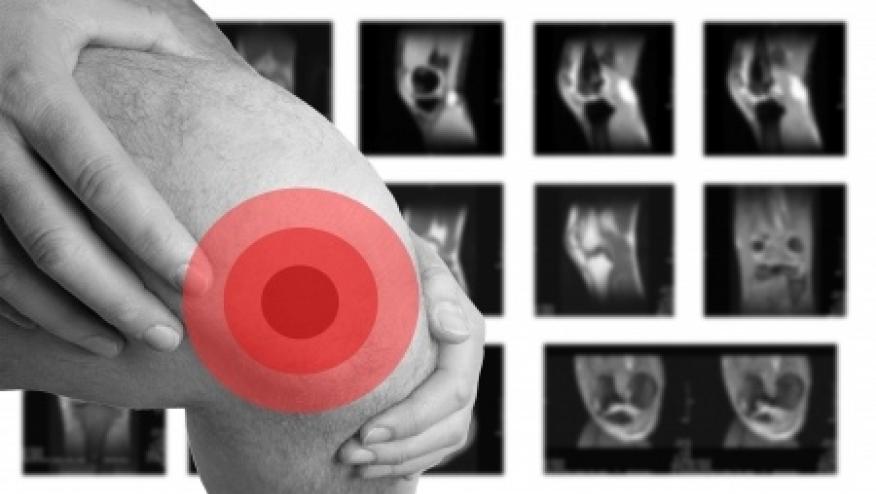ACP/AAFP Guidelines on Managing Musculoskeletal Pain Save

Topical nonsteroidal anti-inflammatory drugs (NSAIDs) are recommended as first-line therapy in a new guideline for treating acute, non-low back pain from musculoskeletal injuries in outpatient settings.
The clinical guide, released by the American College of Physicians (ACP) and the American Academy of Family Physicians (AAFP) also suggested using oral NSAIDs, acetaminophen, specific acupressure, or transcutaneous nerve stimulation to treat acute pain.
The guideline in the Annals of Internal Medicine suggested against using opioids, including tramadol (Ultram), except in cases of severe injury or if first-line therapies aren't tolerated.
The guidance complements the 2017 ACP guideline on acute low back pain, which was endorsed by the AAFP and which solely focused on low back pain, noted AAFP President Gary LeRoy, MD, a practicing family physician in Dayton, Ohio.
"The new joint guideline from ACP and AAFP was developed to address other forms of acute musculoskeletal pain," LeRoy said. "However, the recommendations for both low back and other musculoskeletal injuries are very similar, with a strong recommendation against the use of opioids as first-line treatment and recommendations for NSAIDs as the preferred pharmacologic option," he told MedPage Today.
The guidance, written by Amir Qaseem, MD, PhD, MHA, vice-president of clinical policy at the ACP, and colleagues, is intended for all clinicians. It is based on two studies: a systematic evidence review of 207 drug and nondrug trials for efficacy and safety, and an analysis of predictors of prolonged opioid use after an acute musculoskeletal pain prescription that incorporated 13 observational studies.
The evidence review, by Jason Busse, DC, PhD, of McMaster University in Hamilton, Canada, and colleagues, included nearly 33,000 patients with a median age of 34. About 48% of the studies included a mix of musculoskeletal injuries, 29% enrolled people with sprains, 6% enrolled people with whiplash, and 5% enrolled people with muscle strains. Head-to-head comparisons showing superiority of one intervention over another were lacking, they noted.
Topical NSAIDs were the only intervention that improved all outcomes in patients with acute pain from non-low back, musculoskeletal injuries: they were among the most effective for treatment satisfaction (high-certainty evidence) and for pain reduction at less than 2 hours and at 1 to 7 days, function, and symptom relief (moderate-certainty evidence). They also were not associated with a statistically significant increase in risk of adverse effects. Topical NSAIDs with menthol gel also improved pain at less than 2 hours (moderate-certainty evidence) and symptom relief (low-certainty evidence). Because acute pain can vary widely, topical treatments may not be appropriate for some cases, including severe injury, the authors noted.
Oral NSAIDs and acetaminophen each reduced pain at less than 2 hours and at 1 to 7 days with moderate-certainty evidence. An increased risk of gastrointestinal (GI) adverse events, including bleeding, abdominal pain, constipation, diarrhea, dyspepsia, nausea, and vomiting, was tied to oral NSAIDs. Specific acupressure improved pain at 1 to 7 days and function (moderate-certainty evidence), but only low-certainty evidence indicated that specific acupressure improved pain at less than 2 hours. Low-certainty evidence suggested that transcutaneous electrical nerve stimulation (TENS) improved pain at less than 2 hours and at 1 to 7 days.
High-certainty evidence showed that acetaminophen plus opioids reduced pain at 1 to 7 days and improved symptom relief. None of the other opioid interventions (transbuccal fentanyl, tramadol, and acetaminophen plus ibuprofen plus codeine or oxycodone) were associated with improvements in more than one outcome. Moderate- to high-certainty evidence indicated opioid interventions were linked to increases in risk of neurologic and GI adverse effects.
The analysis of prolonged opioid use after an acute musculoskeletal pain prescription, by John Riva, DC, MSc, also of McMaster University, and co-authors, spanned 13 million participants, including people with work injuries, ankle sprains, low back pain, or several acute pain complaints. It showed the overall prevalence of prolonged opioid use for low-risk populations was 6% (95% CI 4%-8%). For high-risk populations -- defined as patients receiving workers' compensation benefits, Veterans Affairs claimants, or patients with high rates of concurrent substance use disorder -- it was 27% (95% CI 18%-37%).
It's important to note that this new guidance "suggests" not using opioids, noted Einar Ottestad, MD, an acute pain specialist at Stanford University School of Medicine, who wasn't involved with either study or with developing the guideline.
"It doesn't mandate not using opioids," Ottestad told MedPage Today. While most acute musculoskeletal pain will be managed best with the strategy outlined in the guidance, "some of the data supports a greater decrease in pain scores using opioids for treatment, with the understanding that these medications inherently carry more risk," he said.
"Opioids will remain appropriate for certain patients for a short period of time to enable recovery and rehabilitation," Ottestad pointed out. "I hope the guideline leads to a reduction in the use of opioids for minor, acute musculoskeletal pain. However, they should remain in the physician's armamentarium."
Clinical practice guidelines are "guides only and may not apply to all patients and all clinical situations," Qaseem and colleagues noted. "Thus, they are not intended to override clinicians' judgment."
Judy George covers neurology and neuroscience news for MedPage Today, writing about brain aging, Alzheimer’s, dementia, MS, rare diseases, epilepsy, autism, headache, stroke, Parkinson’s, ALS, concussion, CTE, sleep, pain, and more. Follow









If you are a health practitioner, you may Login/Register to comment.
Due to the nature of these comment forums, only health practitioners are allowed to comment at this time.